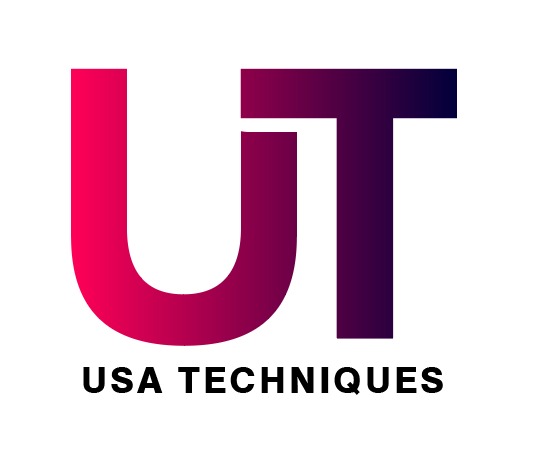The album’s fragile pages were laced with arsenic, so the Smithsonian’s National Portrait Gallery put the images online last month. Curators have since identified more than 1,000 of the 1,800 subjects.
More than two decades ago, the Smithsonian’s National Portrait Gallery acquired a 19th-century album filled with nearly 2,000 silhouette portraits, including those of two former presidents.
Before displaying the cut-paper portraits, made by a traveling artist named William Bache, the museum needed to create a new, sturdier binding for the book. That’s when curators spotted an unusual red residue on the pages, and decided to test the book to make sure it was safe to handle. They found that each of the album’s fragile pages was laced with arsenic.
The album sat in a box until earlier this year, when curators used a grant from the Getty Foundation to digitize it. The museum put the collection online last month, allowing anyone to virtually thumb through the images and learn more about Bache’s life and work through an interactive timeline.
Robyn Asleson, the museum’s curator of prints and drawings, said that researchers had identified a little over 1,000 of the 1,800 portraits. By digitizing the album and making it available online, she said, she hoped it will eventually be possible to identify every portrait in the collection.
“We realized that this book represented a lot of people that left no other portrait behind,” Dr. Asleson said. “And so it’s a really interesting way of looking at early 19th-century American history and just kind of a cross-section of society.”
At the time, the invention of photography was still several years off, and having a portrait painted was time consuming and expensive. Silhouettes were a cheaper, more accessible form of portraiture.
The 1,800 portraits represent a wide range of people, including prominent figures like Thomas Jefferson and George and Martha Washington, as well as enslaved and formerly enslaved people, said Anne Verplanck, a retired associate professor of American studies at Penn State University, Harrisburg, and a researcher of portraits.

“There’s rarely a complete or large list of who they portrayed,” Dr. Verplanck said. “This gives us an unusual detail of life back then.”
He traveled up and down the East Coast from Maine to Virginia, selling portraits for money. He eventually settled in New Orleans, where he created nearly 700 portraits of people of varying origins, including French, Spanish, German, British and Caribbean. Then he traveled to Cuba, where he went door to door offering his services. Despite having no formal training as an artist, Bache had a robust clientele, and kept his prices low, offering four profiles for 25 cents, or the equivalent of about $5 today.
Dr. Asleson said Bache used a physiognotrace, a mechanical device that he modified and patented in 1803, that could trace the contours of a human face with “mathematical correctness” without coming into contact with it. After he finished a portrait, Bache would add additional details, like locks of curly hair, to make it even more accurate.
Bache assigned most customers a number. He’d quickly draw their silhouette and, after handing them their copies, keep the leftover cutout and paste it into the album, creating a “yearbook” of his work, Dr. Asleson said. At the back of the book, he kept a ledger where he noted each number and the corresponding name.
Dr. Asleson said Bache had started out neatly rendering each name, but his writing became sloppier over time. Many of the names were written phonetically, she said, which often resulted in misspellings.
After receiving the grant from the Getty Foundation, the museum worked with a photographer from the Smithsonian, a paper conservator and a few other people to make high-resolution images of the portraits over a two-week period. Because of the arsenic, Dr. Asleson said that each person had to wear a face mask, gloves and a protective gown, and that a scientist was on hand to monitor the toxin levels to ensure it was safe.

It’s unclear how the arsenic ended up on the book’s pages, but it was considered safe in small doses in the 19th century, and was often found in food, medicine and even common goods like face powder. An arsenic-based green pigment was used in wallpaper in Britain at the time.
Heather MacDonald, a senior program officer with the Getty Foundation, said the project was a perfect fit for its Paper Project initiative.
“It’s emblematic of what we are trying to do: support curators who want to take parts of museum collections that are tucked away and give them a visibility, and really create frameworks that let people understand their relevance,” she said.
Dr. Asleson and a research assistant, Elizabeth Isaacson, scanned Ancestry.com and pored over digitized newspapers, history books, baptismal records, wills and marriage certificates to identify people whose silhouettes appear in the book. They identified even more after Dr. Asleson expanded her research to include Spanish-language materials, and discovered that Bache had worked in Cuba.
About half the people whose portraits are included in the book were identified after the gallery was released online. Dr. Asleson said she had heard from a historian in New Orleans who helped the curators identify a few of the silhouettes — exactly what the researchers had hoped would happen.
Ideally, Dr. Asleson said, someone might still have a silhouette portrait passed down through the generations that could be matched to one of the images in the book. Another hope, she said, is that as more people trace their family’s history through genetic genealogy, more of Bache’s subjects may be identified.
“We just realized that it will be of real interest to people who are descendants or who have relatives represented in this album, who have no other image of a great-great-grandfather, great-great-grandmother,” Dr. Asleson said. “I would think this would be really exciting and valuable for them to have.”
